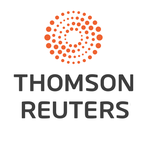The Digital Tightrope: Navigating IT Outages and Consumer Challenges** **
July 25, 2024, 10:16 am

Location: United States, California, San Francisco
Employees: 1001-5000
Founded date: 2011
**
In a world increasingly tethered to technology, the recent global IT outage serves as a stark reminder of our vulnerabilities. The incident, which disrupted flights and essential services, was triggered by a software update from CrowdStrike that clashed with Microsoft’s operating system. This mishap echoes a familiar tune: when the digital backbone falters, the entire system trembles.
The implications are profound. Experts warn that without robust backup plans, similar outages are not just possible; they are inevitable. Organizations must recognize that reliance on a few dominant players in the cybersecurity market can lead to catastrophic failures. The recent chaos is a wake-up call. It highlights the urgent need for contingency strategies and diverse solutions in an increasingly interconnected world.
The digital landscape is a double-edged sword. On one side, it offers convenience and efficiency. On the other, it exposes us to risks that can ripple across industries. The aviation sector felt the brunt of the outage, with travelers scrambling to board flights using handwritten tickets. A simple software conflict turned into a logistical nightmare, showcasing how fragile our systems can be.
As we look ahead, the looming “2038 Problem” threatens to add another layer of complexity. This issue, reminiscent of the Y2K scare, will arise when systems reach their maximum time-storing capacity. With the world more dependent on technology than ever, the stakes are higher. Organizations must prepare now to avoid a repeat of past mistakes.
The cybersecurity landscape is evolving, yet it remains dominated by a handful of companies. This concentration raises questions about the adequacy of existing safeguards. Experts argue that a more diverse market could mitigate risks. However, achieving this diversity is easier said than done. The challenge lies in balancing innovation with security.
Meanwhile, the consumer goods sector faces its own set of challenges. Major players like Nestlé and Kraft Heinz are grappling with sluggish sales in the U.S. and Europe. Inflation has forced consumers to rethink their spending habits. Brands that once commanded loyalty are now losing ground to cheaper alternatives. The cost-of-living crisis has shifted consumer priorities, making price sensitivity a key factor in purchasing decisions.
As companies navigate this turbulent landscape, they must adapt or risk obsolescence. The ability to manage prices effectively will determine which brands thrive. Those that can innovate while keeping costs in check will emerge as winners. The competition from private label brands adds another layer of pressure. These lower-cost alternatives are gaining traction, forcing established brands to rethink their strategies.
In this climate, companies like Unilever are striving to regain lost market share. They are exploring various tactics, from price reductions to promotional offers. The goal is clear: attract consumers who are now more discerning about their purchases. However, the path to recovery is fraught with challenges. The consumer landscape is shifting, and brands must be agile to keep pace.
The intersection of technology and consumer behavior is a delicate balance. On one hand, digital tools can enhance shopping experiences. On the other, they can complicate supply chains and customer interactions. Companies must leverage technology to streamline operations while remaining vigilant against potential disruptions.
As we reflect on these developments, it’s clear that the future is uncertain. The digital tightrope we walk requires constant vigilance. Organizations must invest in robust backup systems and diversify their technological dependencies. At the same time, consumer goods companies must adapt to changing market dynamics. The ability to pivot quickly will be crucial in navigating the challenges ahead.
In conclusion, the recent IT outage and the struggles of consumer goods makers are interconnected threads in a larger narrative. Both highlight the fragility of our systems and the need for resilience. As we move forward, the lessons learned from these events will shape our approach to technology and consumer engagement. The stakes are high, and the time to act is now. The digital landscape is evolving, and those who adapt will thrive.
In a world increasingly tethered to technology, the recent global IT outage serves as a stark reminder of our vulnerabilities. The incident, which disrupted flights and essential services, was triggered by a software update from CrowdStrike that clashed with Microsoft’s operating system. This mishap echoes a familiar tune: when the digital backbone falters, the entire system trembles.
The implications are profound. Experts warn that without robust backup plans, similar outages are not just possible; they are inevitable. Organizations must recognize that reliance on a few dominant players in the cybersecurity market can lead to catastrophic failures. The recent chaos is a wake-up call. It highlights the urgent need for contingency strategies and diverse solutions in an increasingly interconnected world.
The digital landscape is a double-edged sword. On one side, it offers convenience and efficiency. On the other, it exposes us to risks that can ripple across industries. The aviation sector felt the brunt of the outage, with travelers scrambling to board flights using handwritten tickets. A simple software conflict turned into a logistical nightmare, showcasing how fragile our systems can be.
As we look ahead, the looming “2038 Problem” threatens to add another layer of complexity. This issue, reminiscent of the Y2K scare, will arise when systems reach their maximum time-storing capacity. With the world more dependent on technology than ever, the stakes are higher. Organizations must prepare now to avoid a repeat of past mistakes.
The cybersecurity landscape is evolving, yet it remains dominated by a handful of companies. This concentration raises questions about the adequacy of existing safeguards. Experts argue that a more diverse market could mitigate risks. However, achieving this diversity is easier said than done. The challenge lies in balancing innovation with security.
Meanwhile, the consumer goods sector faces its own set of challenges. Major players like Nestlé and Kraft Heinz are grappling with sluggish sales in the U.S. and Europe. Inflation has forced consumers to rethink their spending habits. Brands that once commanded loyalty are now losing ground to cheaper alternatives. The cost-of-living crisis has shifted consumer priorities, making price sensitivity a key factor in purchasing decisions.
As companies navigate this turbulent landscape, they must adapt or risk obsolescence. The ability to manage prices effectively will determine which brands thrive. Those that can innovate while keeping costs in check will emerge as winners. The competition from private label brands adds another layer of pressure. These lower-cost alternatives are gaining traction, forcing established brands to rethink their strategies.
In this climate, companies like Unilever are striving to regain lost market share. They are exploring various tactics, from price reductions to promotional offers. The goal is clear: attract consumers who are now more discerning about their purchases. However, the path to recovery is fraught with challenges. The consumer landscape is shifting, and brands must be agile to keep pace.
The intersection of technology and consumer behavior is a delicate balance. On one hand, digital tools can enhance shopping experiences. On the other, they can complicate supply chains and customer interactions. Companies must leverage technology to streamline operations while remaining vigilant against potential disruptions.
As we reflect on these developments, it’s clear that the future is uncertain. The digital tightrope we walk requires constant vigilance. Organizations must invest in robust backup systems and diversify their technological dependencies. At the same time, consumer goods companies must adapt to changing market dynamics. The ability to pivot quickly will be crucial in navigating the challenges ahead.
In conclusion, the recent IT outage and the struggles of consumer goods makers are interconnected threads in a larger narrative. Both highlight the fragility of our systems and the need for resilience. As we move forward, the lessons learned from these events will shape our approach to technology and consumer engagement. The stakes are high, and the time to act is now. The digital landscape is evolving, and those who adapt will thrive.
